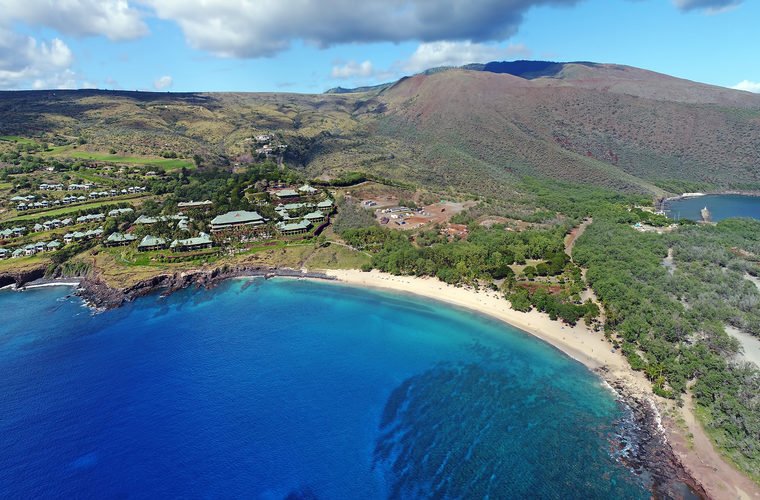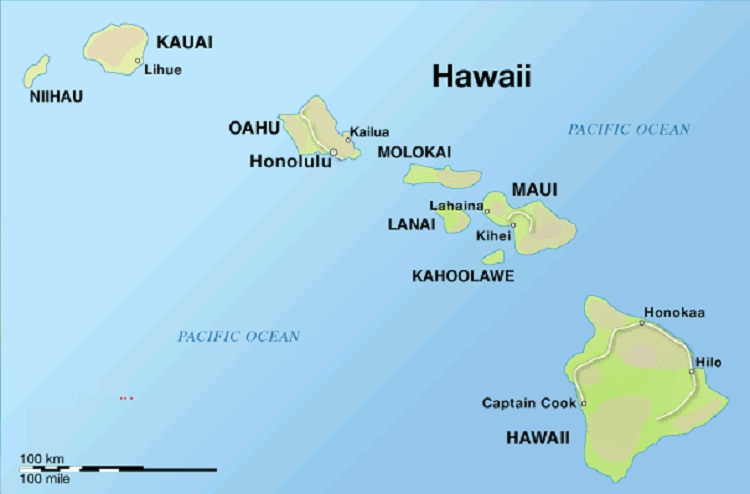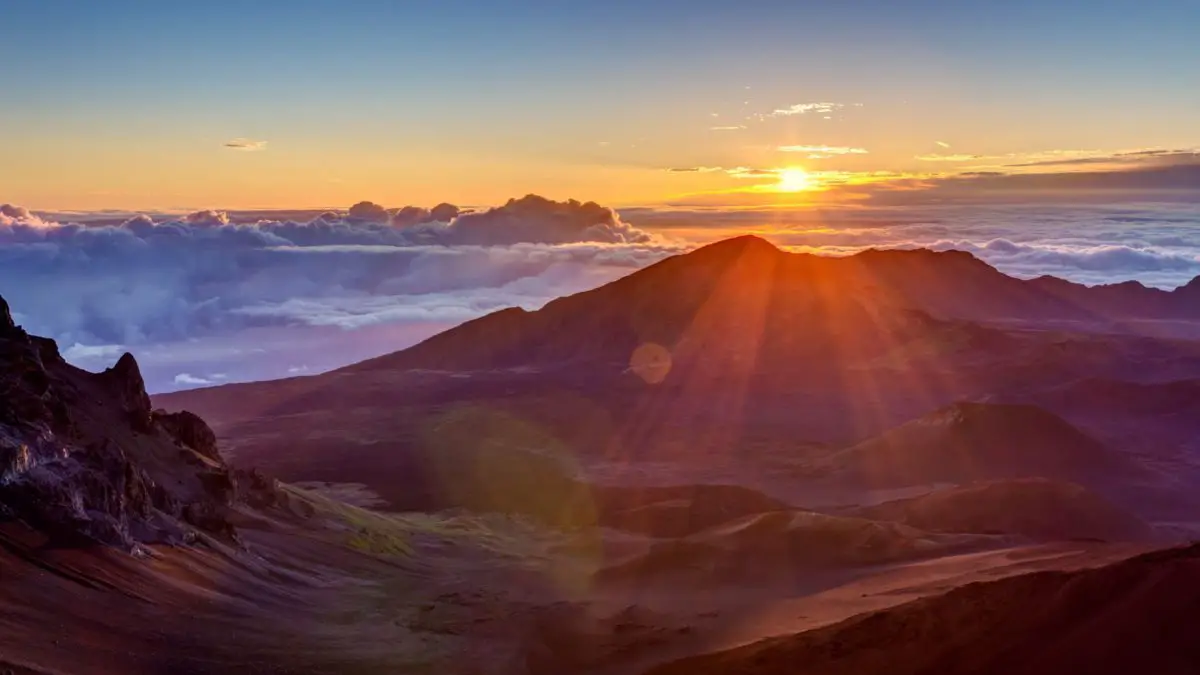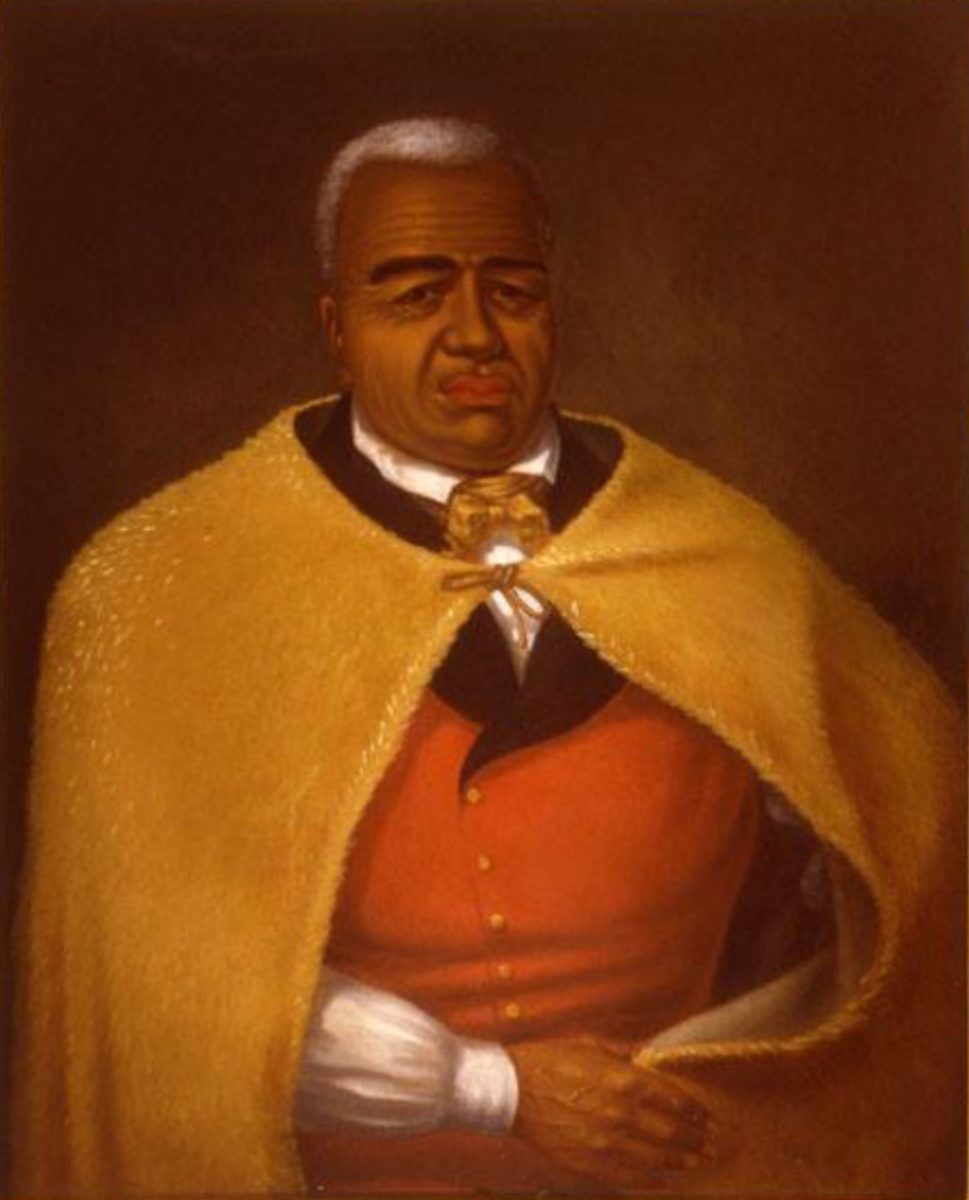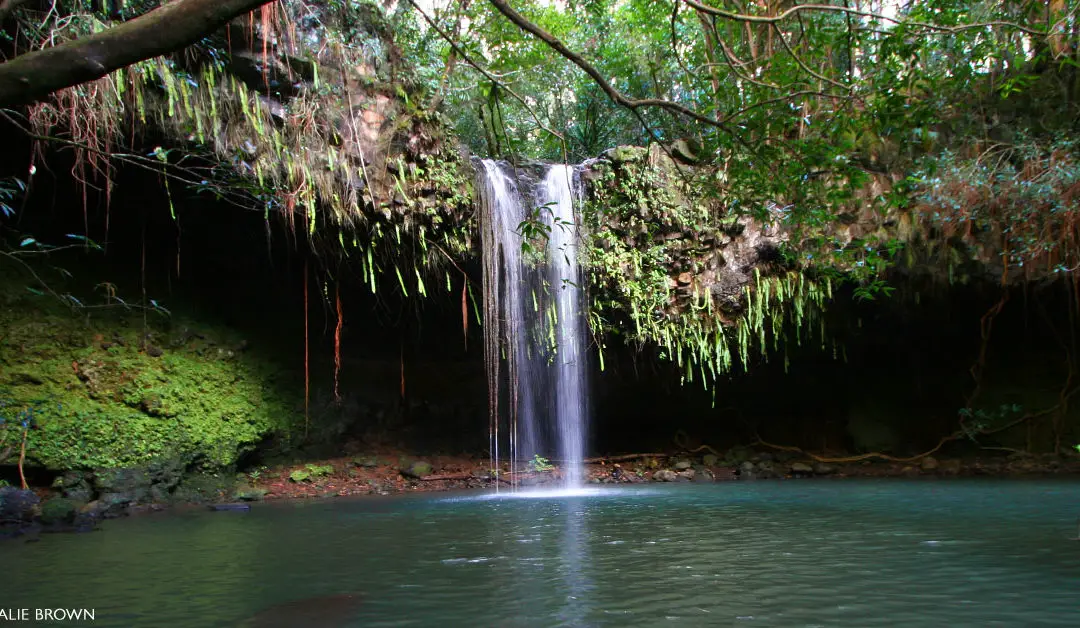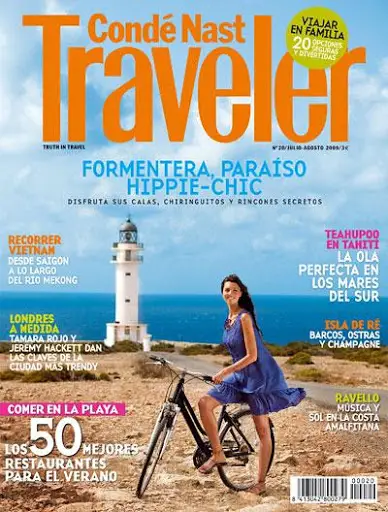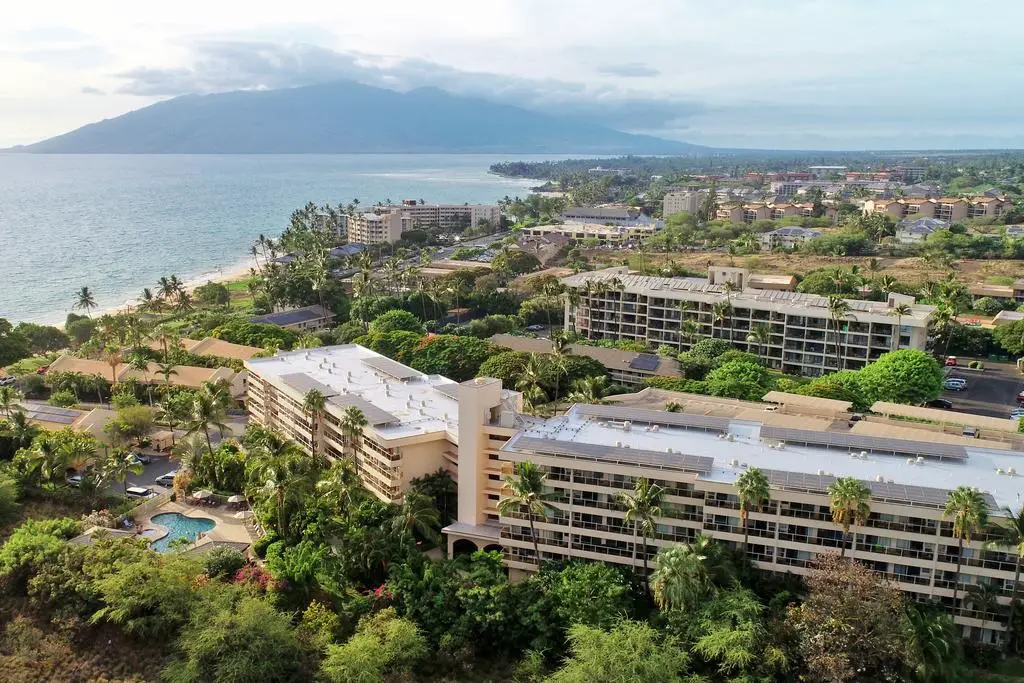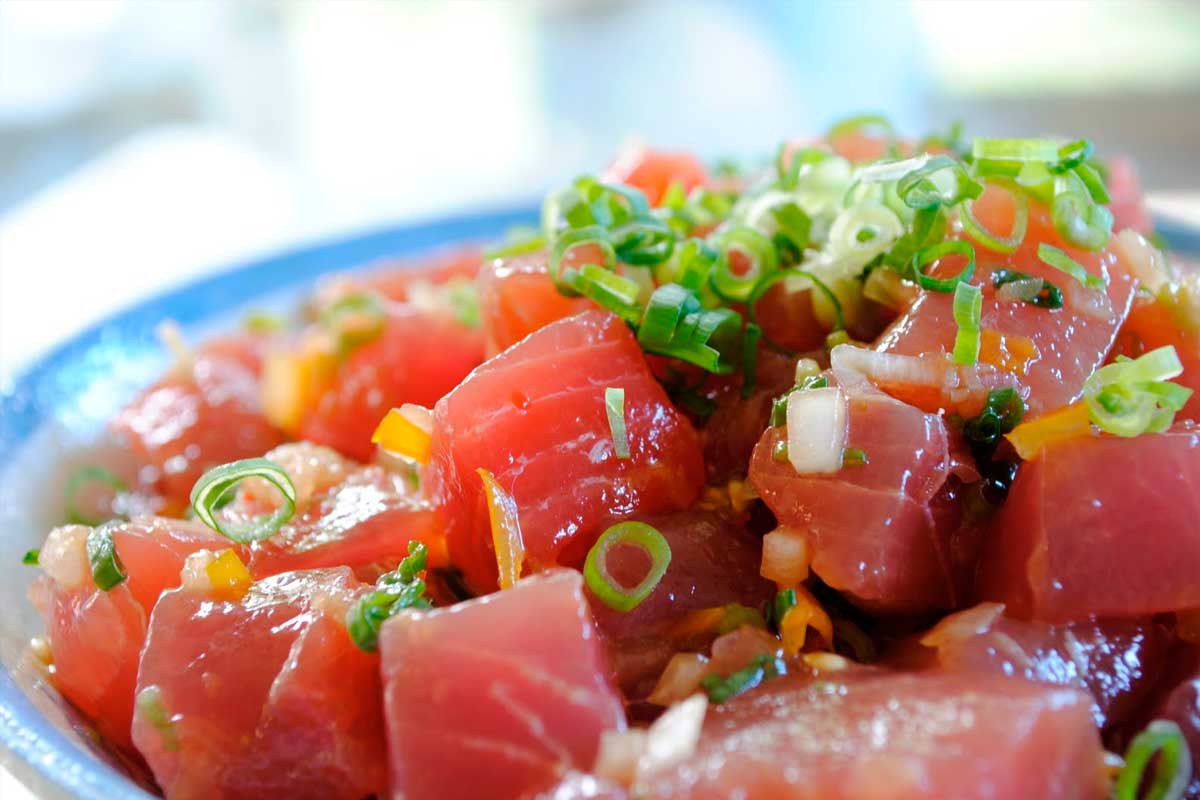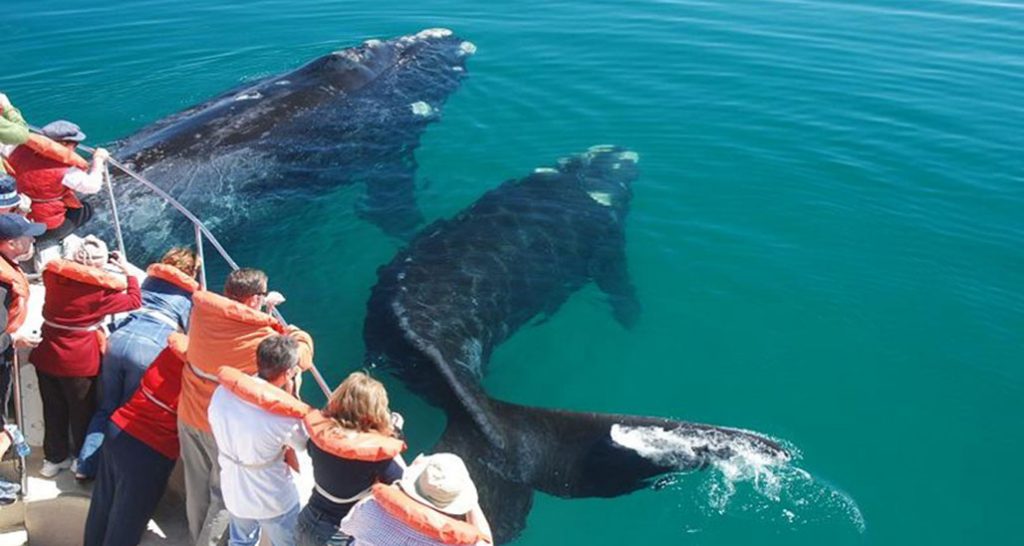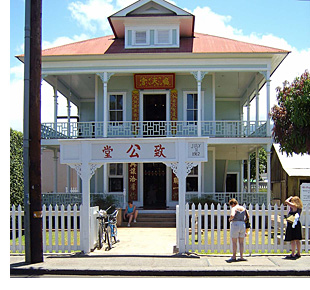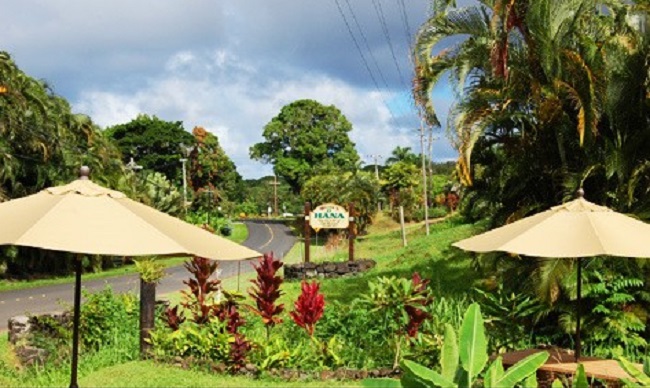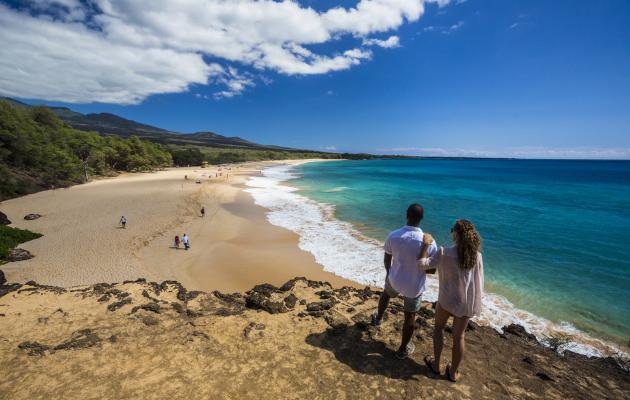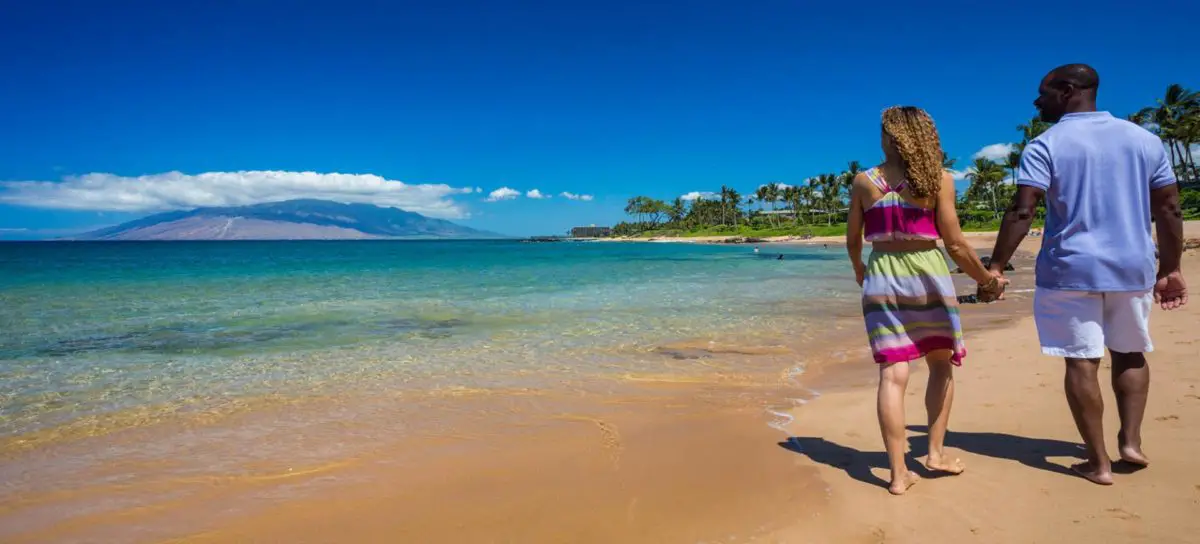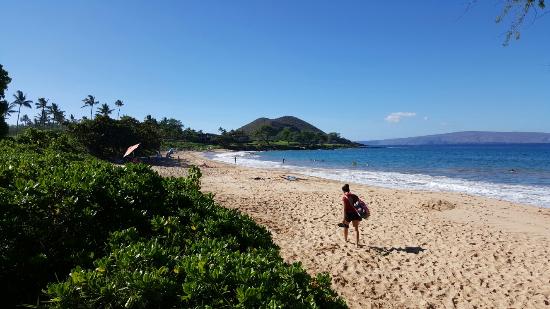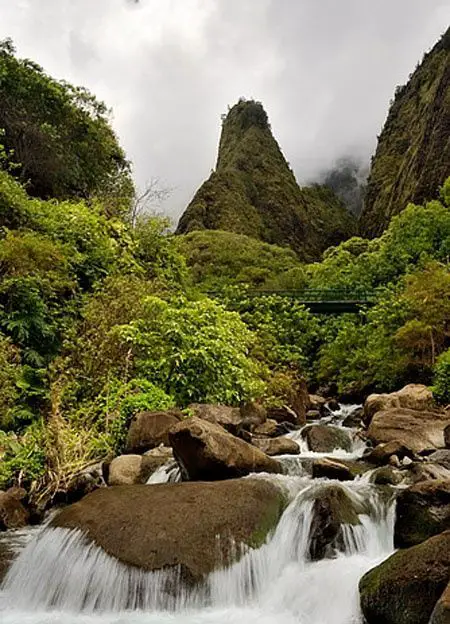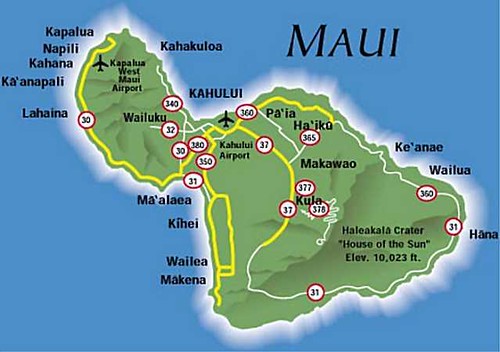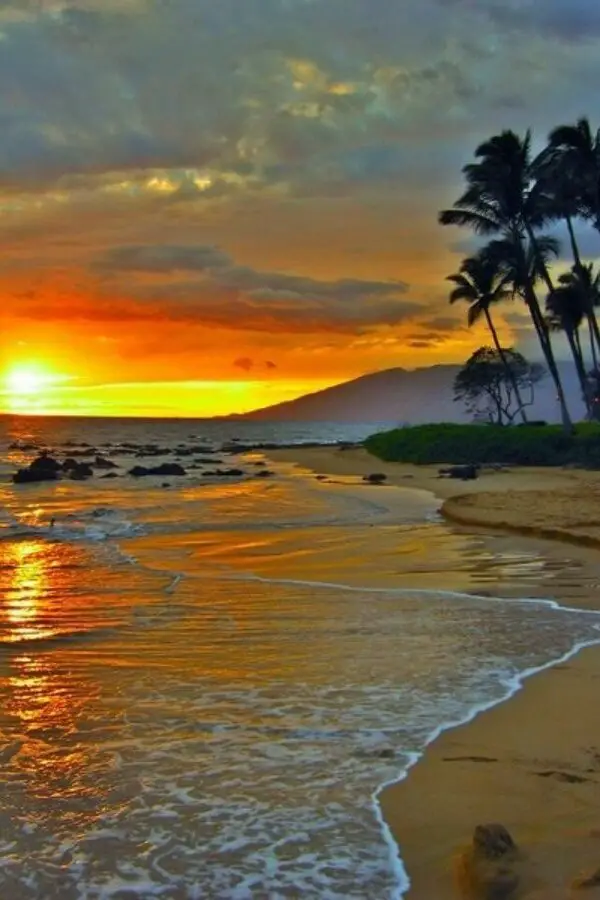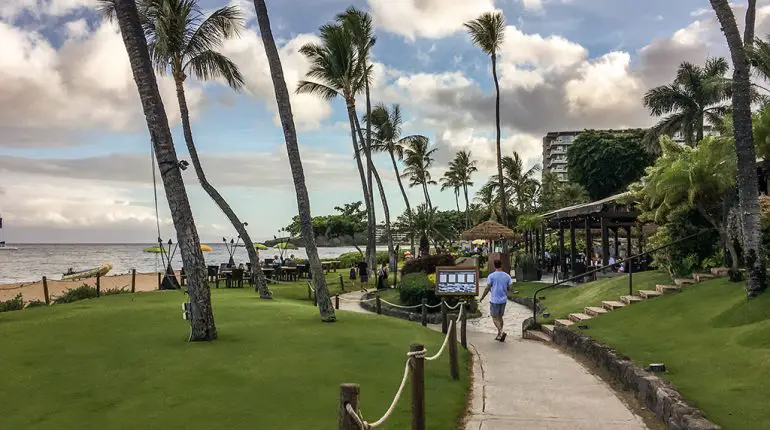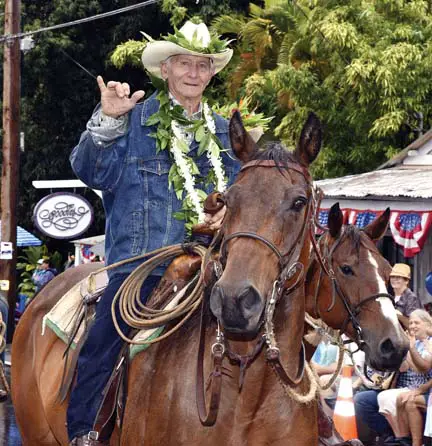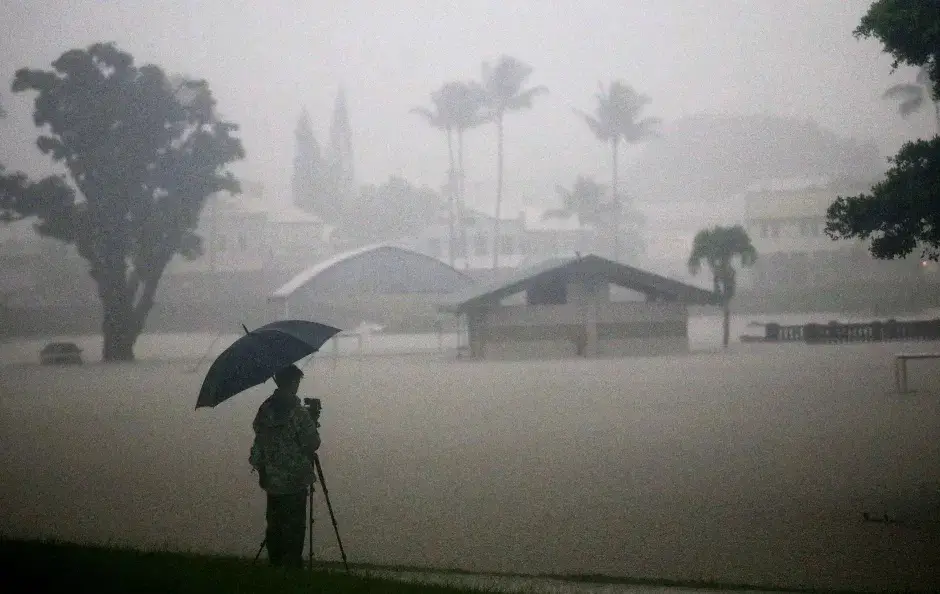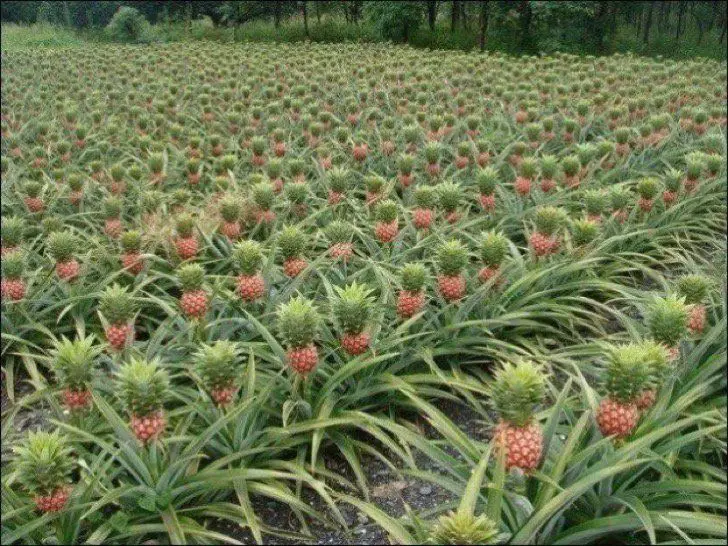Get to know the island of Maui, a destination for adventure, fun or a well-deserved rest for body and mind thanks to its natural beauty that inspires restorative relaxation. We invite you to learn more about its natural wonders, history, climate and more.
Indice De Contenido
Where is the island of Maui?
The island of Maui is part of the Hawaiian archipelago in the Pacific Ocean, which is administratively part of the United States.
Together with the islands of Lanai, Kahoolawe, Molokai and other smaller islands, Maui Island forms the State of Hawaii, the only island and extra-continental state in the United States, and the last to be admitted as such in 1959.
With a total area of 1,880 sq km, Maui is the second largest island in the Hawaiian archipelago and the third most populous. It has a population of 117,644 (2000), making it the third most populous island.
Maui is an island of volcanic origin, formed by the eruption of two volcanoes which later joined together. A similar formation is described in Underwater Volcanoes.
These two volcanoes are connected by an isthmus, whose soil is very fertile, which is why Maui is also known as the Valley Island.
One of the volcanoes is called Haleakala, which lies to the east and is more recent and higher, with a caldera at an altitude of 3,050 metres, last erupted in 1790.
Then there is the oldest volcano, Mauna Kahalawai, which is very weathered. It is sometimes called West Maui Mountain, as it lies in the west of the island. See also the self-contained islands.
How did it get its name?
Legend has it that the island was named after the epic demigod Maui, who in the Polynesian region was said to have created these islands by fishing them up from the bottom of the sea with a magic hook, and was named by the locals after the constellation Scorpius.
Who was the demigod Maui?
Polynesian mythological legend tells us that Maui was a talented and intelligent demigod who was responsible for raising many Pacific islands, including New Zealand, from the depths of the ocean.
After his miraculous birth, Maui was always loved by his supernatural parents, was a master of the useful arts of man, and was able to catch the sun and tame fire.
His four jealous brothers tried to abandon him and lose him when he went fishing, but Maui heard what they were planning and created a special hook with a magical ancient jaw.
One night he hid in the bottom of his brothers’ canoe before they went out to fish, and when they reached the sea, he came out of his hiding place to cast his magic hook into the sea, reciting powerful incantations.
When the hook hit the bottom, Maui pulled on it, bringing up a huge fish. His brothers helped him bring it to the surface and cut it into pieces, forming the islands of today with their mountains, lakes, valleys and rocky shores.
History of the island of Maui
The first settlers of the island came from the nearby Polynesian islands of Tahiti and the Marquesas, and some time later, in November 1778, Maui was discovered by the English Captain James Cook, but he was unable to land at that time as there was no suitable harbour.
He did, however, leave a record of the island and identified it as Mowe or Mow’ee.
A few years later, the first European landed on the island. This was in 1786 when the Frenchman La Perouse landed in the cove that was named after him and still exists today.
Four years later, in 1790, King Kamehameha I of Hawaii conquered the island and established his residence in Lahaina, which he later made the capital of his kingdom.
Over time, traders, whalers and missionaries came to live on the island.
The first missionary school was established there, called the Lāhaināluna Mission School, which still exists today and is the first American secondary school in these rocky lands.
Here the villagers learned to read and write. They also set up a printing press to document the history of these islands, which until then had been passed down orally.
They also designed the 12-letter Hawaiian alphabet, which was essential for writing. These missionaries, so to speak, changed the culture of the region, but they also preserved the native history, culture and language for posterity.
During the Second World War, Maui served as a housing and training base for the US Army in Haiku, which numbered around 100,000 soldiers.
Most notably, in 2012, the British newspaper The Guardian named Maui as one of the best places in the world to live.
It occupied one of the top five places on the list published by the newspaper, sharing honours with:
- Santa Cruz de Tenerife, Spain
- Portland, in the state of Oregon, USA
- Sankt Pauli district, Hamburg, Germany
- Cihangir district, Istanbul.
Things to do on the island of Maui
Due to its lush and abundant vegetation, the island of Maui offers a variety of unique and enjoyable attractions to be considered as a holiday destination. Maui is the island of choice for its world famous beaches.
It is also famous for the sacred Iao Valley, sightings of migrating humpback whales during the winter months, organic cuisine and the magnificent sunrises and sunsets of Haleakala.
For many years, Maui has been voted “America’s Best Island” by the readers of the prestigious Condé Nast Traveler magazine.
Maui Island Land Activities
There are many adventures to be had in Maui’s diverse geography. As well as the fabulous warm beaches, visitors can become a paniolo, or Hawaiian cowboy, by riding horses in the interior.
It’s a wonderful experience to watch the sunset from the top of Haleakala. To get there, you’ll have to take an exhilarating zipline through the jungle.
It’s also possible to spend the day relaxing in Lahaina’s well-stocked shops or art galleries.
Where to eat in Maui
Maui has some great places to satisfy your appetite with an unusual combination of mouth-watering culinary options.
Indulging in the flavours of traditional Hawaiian cuisine, using local produce from local farms and fresh fish from the sea, is a real treat and an adventure for the palate.
Dining at a luau, a traditional Hawaiian feast with entertainment, especially at sunset, is an experience not to be missed.
It is also possible to eat on the road on routes to small towns such as Wailuku and Paia to get a taste of the rural flavour of some of the local favourites.
Maui offers visitors the opportunity to feast on unimaginable delicacies, from haupia, the traditional coconut milk dessert of luaus and gatherings, similar to a European pudding, to hamburgers.
Maui Island Accommodation
Due to their worldwide reputation, large and prestigious hotel chains have established themselves on the island and offer the most welcoming accommodation.
There’s something for every taste and budget, from stunning ocean-view rooms at resorts like Kapalua and Kaanapali to spacious cottages on the sunny shores of Kihei on the south shore.
You can also opt for a secluded cottage on the road to Hana in East Maui, surrounded by palm trees, fruit trees and tropical flowers.
There is also the option of renting entire apartments and houses on a short-term basis in areas specifically zoned for such accommodation and with the appropriate State of Hawaii or County permits.
Whale Watching
Whale watching is an activity that has become very popular and attracts a lot of tourist attention during Hawaii’s winter season.
At the end of November each year, more than a thousand humpback whales, of which there are between 10,000 and 15,000 in the world, make their way to Hawaii’s warm waters. They stay until April before returning to Alaska.
Day trips are organised in small or medium sized boats that set sail at sunset to view this rare species of whale. During the trip you will share a snack, a drink, a short talk about the whale and you can even hear the whales communicating with each other through special hydrophones.
You can also go whale watching by diving into their world in a submarine operated by Atlantis Submarines, the only company currently offering this service, mainly on Oahu, Maui and the Big Island of Hawaii.
Haleakala National Park
Haleakala National Park is an impressive natural park that stretches from the south coast of the island to the east coast. The highest peak on the island, which gives the park its name, is the aforementioned Haleakala Peak.
The name Haleakala means ‘the house of the sun’ in Hawaiian. Legend has it that the grandmother of the demigod Maui tied her hair to the sun and the summit of the volcano before his journey to the island in order to prolong the daylight.
There are several hiking and trekking programmes in the park, not only to explore the park but also to see the many species of flora and fauna.
These excursions can be done on horseback, on foot or with a guide, and take the visitor through the 30,000 hectares of the park, visiting high mountain peaks, deserts or jungle areas with waterfalls and a variety of microclimates.
Walking is a very exciting activity because of the adventure it involves. In this park it is very well organised, with well marked trails through places where the scenery is magnificent and worth enjoying.
It is a completely safe activity in this natural park and camping is allowed, even when it gets dark on the trail, although there are chalets and cottages nearby that offer accommodation.
Town of Lahaina
Once one of the main ports of the archipelago, Lahaina was the capital of Hawaii, so it’s a must-see when visiting Maui.
It was a whaling centre in the 19th century and an agricultural centre for many crops. The largest statue of Buddha outside Asia is located in the harbour area. It is called the Jobo Mission.
It is also home to Hawaii Whalers Village, Maui’s largest shopping centre with shops and attractions.
Another important site in Lahaina is the Catholic Church of Mary Lanakila, built between 1856 and 1858 by missionaries who had been on Maui since 1846.
Lahaina is also home to the Wo Hing Temple Museum, a place built by the Chinese who arrived on the island in 1909 and whose cultural and historical legacy is collected in this museum.
Protestant missionaries also came to Maui and built the Baldwin Home in 1930 to record their experiences of life on the island.
The Hale Paahao Jail was built in the 1850s to hold sailors who were rowdy and disturbed the peace of the town.
In town you can also visit the Banyan Tree Park, home to the largest fig trees in the United States. They were brought from India and planted near the harbour and the Lahaina courthouse.
Road to Hana
This famous road runs for 83 kilometres from the coast of northeast Maui up the mountain to the village of Hana.
It begins in the town of Kahului and ends in the charming, remote and rustic village of Hana, once a thriving sugar cane plantation and mill.
The road has 620 sharp bends and 59 bridges, 46 of which are single-lane.
The journey takes the traveller past cliffs, beaches and waterfalls, a lush ride through tropical jungle and high cliffs with incredible views to the blue and emerald waters of the Pacific Ocean.
Each turn reveals a landscape more beautiful than the next, with views of the sea, mountains, jungle and trees, all truly extraordinary and rich with waterfalls, botanical gardens and surf spots with black sand beaches.
Arriving in Hana, you are immediately struck by the tranquillity of the village nestled in the emerald rainforest. A cool sea breeze carries the scent of white ginger and sweet guava.
The perfect respite for a peaceful night’s sleep in a cottage or romantic resort, followed by a day of surfing, horseback riding or just frolicking on the beach before heading home.
The village custom is to give those who complete the journey a sticker that says “I survived the road to Hana”.
The best beaches on the island of Maui
This island has become world famous for the extraordinary beauty of its beaches, which provide entertainment and warm waters for all who visit. The island’s 193km coastline has an estimated 48km of beaches that are suitable, attractive and enjoyable for every tourist.
On these coasts, the beaches can be of white, black and red sand. Some are ideal for water sports, the most popular and daring being surfing and windsurfing. Others are simply for swimming, snorkelling and sunbathing.
The vast majority of these beaches are easily accessible beach parks with lifeguards, picnic areas, camping and comfortable sanitary facilities. Others are ‘hidden spots’ that have yet to be discovered because they are off the beaten track. Some of the best known are
Makena Beach
Also known as Big Beach, this pleasant white sandy beach is the largest and one of the most popular on the island of Maui with locals and visitors alike.
Maui Beach
It’s said to be frequented by people who don’t like wearing bathing suits. The waves are perfect for bodysurfing and sometimes surfing.
Very popular, especially on Sundays. Very suitable for those who like to swim quietly.
Kama’ole Beach Parks
Very nice for swimming and frolicking on the shore, with many amenities such as lifeguards, volleyball courts and comfortable facilities.
Charley Young Beach
Access is through a residential area at the northern end of Kamaole Beach Park.
Insiders recommend visiting this beach in the morning when the ocean conditions are calmer, as the trade winds have not picked up for hours.
Keawakapu Beach
A spectacular spot for those looking for an exciting ocean experience. It offers typical beach scenery for those who enjoy photography.
Maluaka Beach
This beach is very popular for its beauty, especially at sunset. Good for snorkelling and swimming. Swimming area, picnic area and showers.
Polo Beach
Located in the Wailea area, Polo Beach is a popular spot for residents and tourists alike due to its accessibility and facilities. It has picnic tables, restrooms and lifeguards.
Features of Maui Island
The main distinguishing feature of the island of Maui is its division into five well-defined regions, with peculiarities depending on the location, which are as follows
Central Maui
This is where most of the tourists arrive, as Kahului Airport is located here. It is the region where most of the population lives and where there are many natural attractions.
Chief among them is Lao Valley State Park, surrounded by misty forests, breathtaking valleys and enchanting streams. Excellent hiking on a paved trail leads to one of Maui’s most iconic landmarks, the 366-metre Lao Needle.
Many local shops and restaurants are located at the entrance to the park and you can visit the historic sites in the pleasant town of Wailuku.
The town of Kahului is also located here and is a bustling commercial centre with the largest shopping mall on Maui. It can be reached by taking the highway to Hana and passing through the town of Paia.
East Maui
This is a place of lush natural beauty, including tropical forests, crystal clear whispering creeks, waterfalls that cascade into hidden pools and thrillingly curving cliffs that lead to the sea.
Along the way you can enjoy a variety of stalls selling juicy tropical fruits. It is close to the road to Hana, which can be covered in as little as three hours, or in a full day if you want to take in the scenery, take photos, videos and selfies, or sample the food of the locals in their shops and eateries.
Once in Hana, you can spend a few hours in this unique Hawaiian village full of tradition and natural beauty.
Passing through Hana, you reach the amazing Seven Sacred Pools of Oheo, where you can swim in the soothing waters after a long but enjoyable journey.
South Maui
This area of Maui is extremely quiet, but somewhat dry as it is a very sunny area. There are many soft sandy beaches with views of the islands of Lanai, Molokini and Kahoolawe.
One attraction is the Maui Ocean Center aquarium in Maalaea Bay, where visitors are greeted by friendly whales.
In this region, you can also play golf on exceptional world-class courses, dine in fine restaurants and stroll through resorts enjoying the hospitality of the locals.
West Maui
This is the region for relaxation, not least because it was once the retreat of Hawaiian royalty. It is home to a number of impressive resorts as well as shopping malls with a variety of shops and restaurants with spectacular views of the region’s most beautiful sunsets.
All these facilities are linked by the major Honoapiilani Highway. Also in this area, north of Maalaeay and the Maui Ocean Centre, is the historic whaling town of Lahaina.
Lahaina was once a bustling port with rustic buildings still standing.
Today it is a centre for high-end shopping and winter whale-watching, and the port of arrival for many cruise ship tourists.
It’s a pleasure to stroll along the Kaanapali Beachwalk, where you can find everything you need in the big shops, as well as watch and, if you like, join in the beach games.
There are so many resorts that it is easy to get confused, so head out of the area to Kapalua, where world-renowned golf championships are held.
Of course, every resort and hotel in the area claims to have the best sunset and ocean views. It’s hard to decide which is the best.
West Maui is famous for its views of the islands of Lanai and Molokai across the channel, bathed in the glow of the sunset.
Inland Maui
This area marks the transition from glorious golden beaches to rolling hills and misty mountains. It is a region of the highest elevations surrounding Haleakala, the island’s highest peak.
Since time immemorial, Hawaiians, especially those on the island of Maui, have grown taro, a plant that produces an exotic-tasting tuber used to make delicious dishes and drinks, and sweet potatoes, the basis of many traditional dishes, in the volcanic soil of this region.
This is a great area to visit dairy farms or sample Maui wines and liqueurs at shops in Kula and Makawao.
This is also the home of the Hawaiian cowboys, or paniolos, who arrived in the 19th century when King Kamehameha III brought them from California to teach the locals how to herd cattle.
As mentioned above, this inland province is home to the 3,055 metre high Haleakala, from where you can see the whole of ‘Valley Island’ and enjoy the fantastic sunsets and sunrises of unreal and sublime landscapes.
This is in stark contrast to the coconut palms of Kaanapali and Kapalua, but it is still an incredible experience to experience Maui’s mountains.
Maui Island Climate
In general, the weather on the island of Maui is warm most of the year. There are two distinct seasons: the dry season, which lasts from April to October, and the rainy season, which lasts from November to March. During the dry season there is a risk of hurricanes and the likelihood of tsunamis.
The climate is subtropical, with the two seasons differing in both temperature and rainfall, which is usually continuous throughout the year. Temperatures are above 20 degrees Celsius with high humidity.
The average temperature at sea level ranges from 29 to 32°C in summer and 18 to 21°C in winter. Rainfall is heavy throughout the year.
Temperatures decrease with altitude, which is why Maui’s three highest peaks, Haleakala, Mauna Loa and Mauna Kea, are covered with snow in winter: Haleakala, Mauna Loa and Mauna Kea.
Maui Island Flora and Fauna
Maui’s location in a subtropical zone of the South Pacific Ocean has resulted in a vegetation of numerous species of tropical plants, as well as a diverse fauna, especially of marine type.
In terms of vegetation, more than 2,500 native plant species have been identified, in addition to introduced species and flowers.
Fruit trees such as pineapple and papaya are grown, as well as other crops such as coffee, sugar cane and various vegetables.
In terms of fauna, the sea is rich in cetaceans, including the humpback whale. Tuna is one of the most prized fish catches. Among the only mammals native to the region are the Polynesian rat, the white bat, turtles and the monkey seal.

